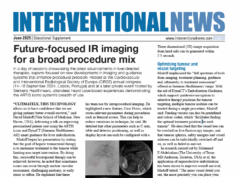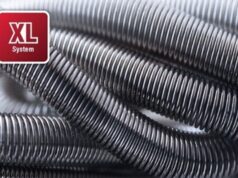
Trisacryl gelatin microspheres 100–300μm in size can be considered for genicular artery embolization (GAE), a new study presented at the 2021 meeting of the Society of Interventional Radiology (SIR; 20–26 March, online) reports. Presenting the two-year outcomes of a study comparing Embosphere microspheres (Merit Medical), which are made of trisacryl gelatin, with imipenem cilastatin for GAE in patients with moderate to severe knee osteoarthritis, Shivank Bhatia (University of Miami Miller School of Medicine, Miami, USA) informed delegates that the particles are comparable in terms of pain reduction, and that there is a sustained effect up to two-years of follow-up.
“Genicular artery embolization has potential to provide midterm relief of pain for patients with mild-to-moderate knee osteoarthritis resistant to conservative management,” he said.
Detailing their methodology, Bhatia described how the investigators conducted a comparative study, assessing a total of ten patients (15 knees) who had a GAE with 100–300μm Embosphere microsphere particles, and comparing them to a subsequent cohort of eleven patients (18 knees) who underwent GAE with Imipenum Cilastatin microspheres. Clinical outcomes were evaluated at six-month and 24-month follow-up and compared to baseline using the Western Ontario and McMaster Universities Osteoarthritis Index (WOMAC) questionnaire.
Bhatia noted that, at baseline, there were no significant differences in sex, age, body mass index (BMI), duration of pain before the procedure, prior treatment, or Kellgren-Lawrence grade between the two cohorts. Baseline median pain WOMAC and total WOMAC scores were 13 (interquartile range [IQR], four) and 46 (IQR, four) in the Embosphere group and 13 (IQR, three) and 47 (IQR, 28) in the Imipenum Cilastatin group [p=0.875 and p=0.738], respectively.
The median follow-up was 796 days (range, 736–808). Clinical success (measured as 50% reduction in WOMAC pain score vs. baseline) was achieved in 69.23% of the embolized knee joints in both groups (p=1) at six months.
At two-years follow-up, the investigators report clinical success in 61.5% of knees treated with the Embosphere microspheres, versus a 53.8% clinical success rate in the Imipenum Cilastatin group (p=1).
Both embolic materials resulted in a significant decrease in pain WOMAC and total WOMAC scores at six months compared to baseline (p<0.05), and the effect of GAE on pain WOMAC and total WOMAC scores was sustained until the 24-month follow-up visit in both groups (p<0.05).
Relating the adverse events, Bhatia commented: “Minor events included transient cutaneous colour change [in five patients] or transient leg numbness observed in one patient], and was only identified after GAE with Embosphere microsphere particles (p=0.00387), which resolved spontaneously at one-month follow-up (Clavien-Dindo classification grade I).” There were no major adverse events.










